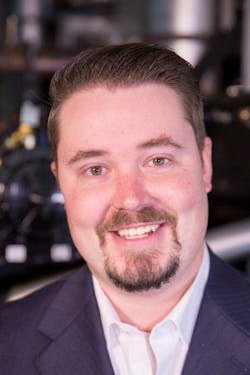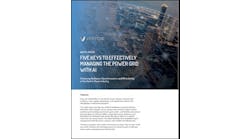How Microgrids can Increase Resiliency for Data Centers
COVID-19 has forced many people to work from home, making resiliency of energy supplies for data centers more important than ever. Derek Tugwell, vice president of data centers at PowerSecure, discusses how microgrids can help.
What impact has COVID-19 had on data centers?
Derek Tugwell: Cloud services are being used at a much higher level. The data center traffic has picked up substantially with people video conferencing and using the cloud more than they typically would in an office environment. From an individual consumer standpoint, many more people have been using streaming services and home type applications like YouTube or Netflix. If a data center does go down, the negative impacts will be amplified at the moment because so many more customers would be affected. This makes it even more important for data centers to have reliable backup energy systems that can provide resilience.
Can a microgrid meet those demanding backup and resiliency needs for data center operators?
DT: In general, yes. Microgrids, which could include renewables and energy storage systems combined with traditional backup diesel generators, could be more resilient than traditional backup generators used alone. We provide data centers with our ultra clean, tier 4 diesel generators. These are considerably cleaner than the traditional tier 2 systems used in the past. The benefits are not just environmental; the system allows the facility to participate in demand response type applications and peak shaving to help stablilize the grid. We’re seeing utilities in California right now having to cut clients off for periods of time, because of the constraints on the grid. The demand response services allow the data center to flip to the generator instead of the grid to keep the grid strong during high capacity periods.
What is the difference between a tier 2 and a tier 4 engine?
DT: Historically in the US, engines have been classified as tier 2. More recently, engine manufacturers have been rolling out tier 4, the emissions from these engine are around 90% cleaner. The EPA changed the rulings from tier 2 to tier 4, and said that tier 2 engines can be used only, strictly for emergency situations. The tier 4 engines allow clients to take advantage of revenue generation programs, like participating in demand response.
Studies show that diesel engines are more reliable if they run more frequently, so another benefit is that this cleaner technology allows them to be run or ‘exercised’ more often and for longer periods of time. They are cleaner; so don’t breach their emissions caps. This increases the reliability of the engine in emergency situations. In our customer base, the engines that run for demand response in a microgrid result in less failures than the strictly standby generators. This is directly correlated to the frequency that they are operated. If a diesel engine is sitting there for six months, not running, the reliability of the system goes down.
Can a data center operator leverage their existing generators and backup systems in their microgrid?
DT: In most cases, existing backup generators can be integrated into a microgrid system to provide much more flexibility for use than just simply standby. One consideration is that a strictly backup generator cannot run unless it is an emergency blackout, whereas a tier 4 engine integrated in a microgrid has the flexibility to run for load management. An existing generator may need after-treatment systems to clean up the exhaust; the investment in this is something that has to be weighed. Resiliency can be added through addition of multiple sources of energy, so it is possible to add renewables and storage, and tie the system together.
Are microgrids systems for providing backup for data centers complex?
DT: They are complex, but that complexity is offset by the resiliency benefits. We have some big clients asking us to look into hybrid systems, and adding energy storage. This does create more points of failure, but it adds redundancy and flexibility. You have to look at the whole picture and consider the number of points of failure, but also the number of points of resiliency. We are seeing an increasing interest in microgrids or utilization of existing or new generators for applications other than standby, like enrolling in programs to support the utilities. Historically, this was not something data center customers were interested in. I think they are starting to see the potential revenue streams, and they are seeing that it truly does help the utility grid. People are becoming more aware that this is not just a piece of iron behind your facility that comes on when the power goes out.
Derek Tugwell is vice president of data centers at PowerSecure. More information on this subject is available in PowerSecure’s white paper.







